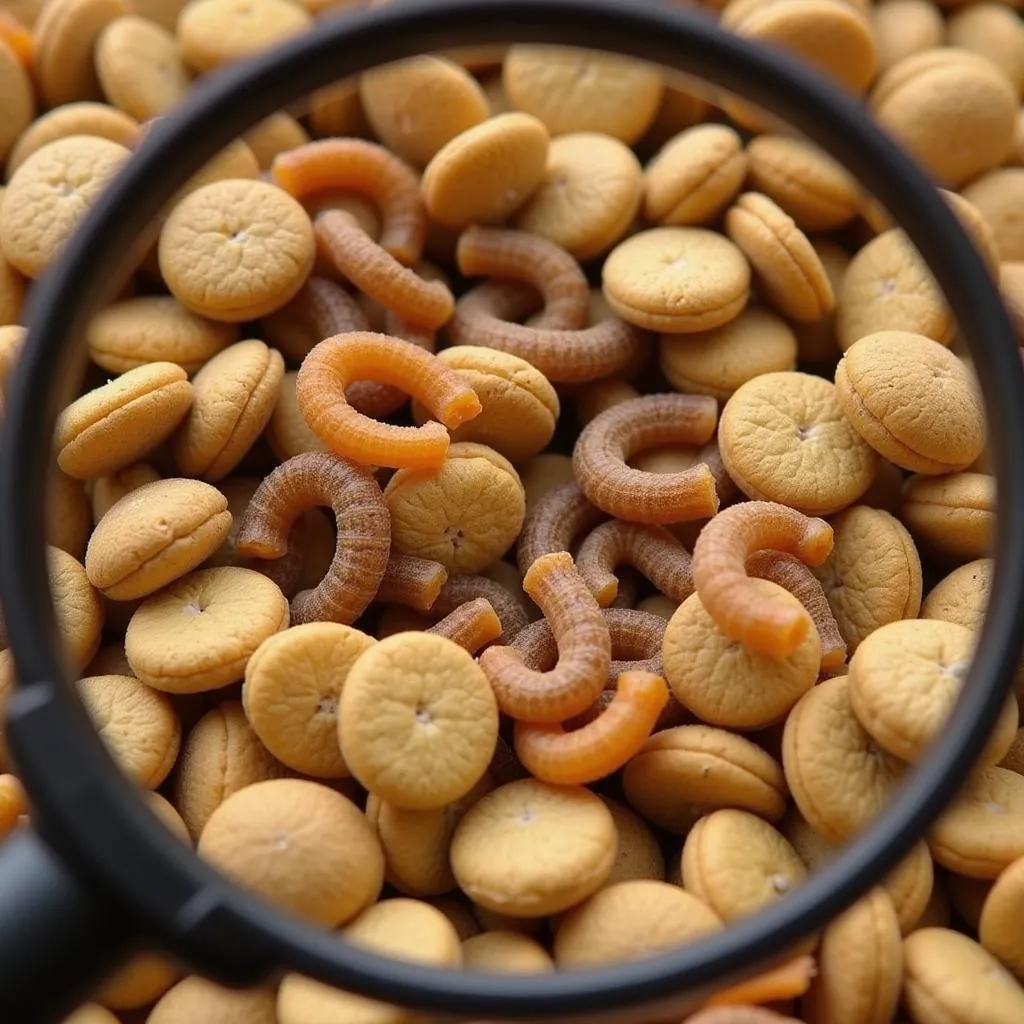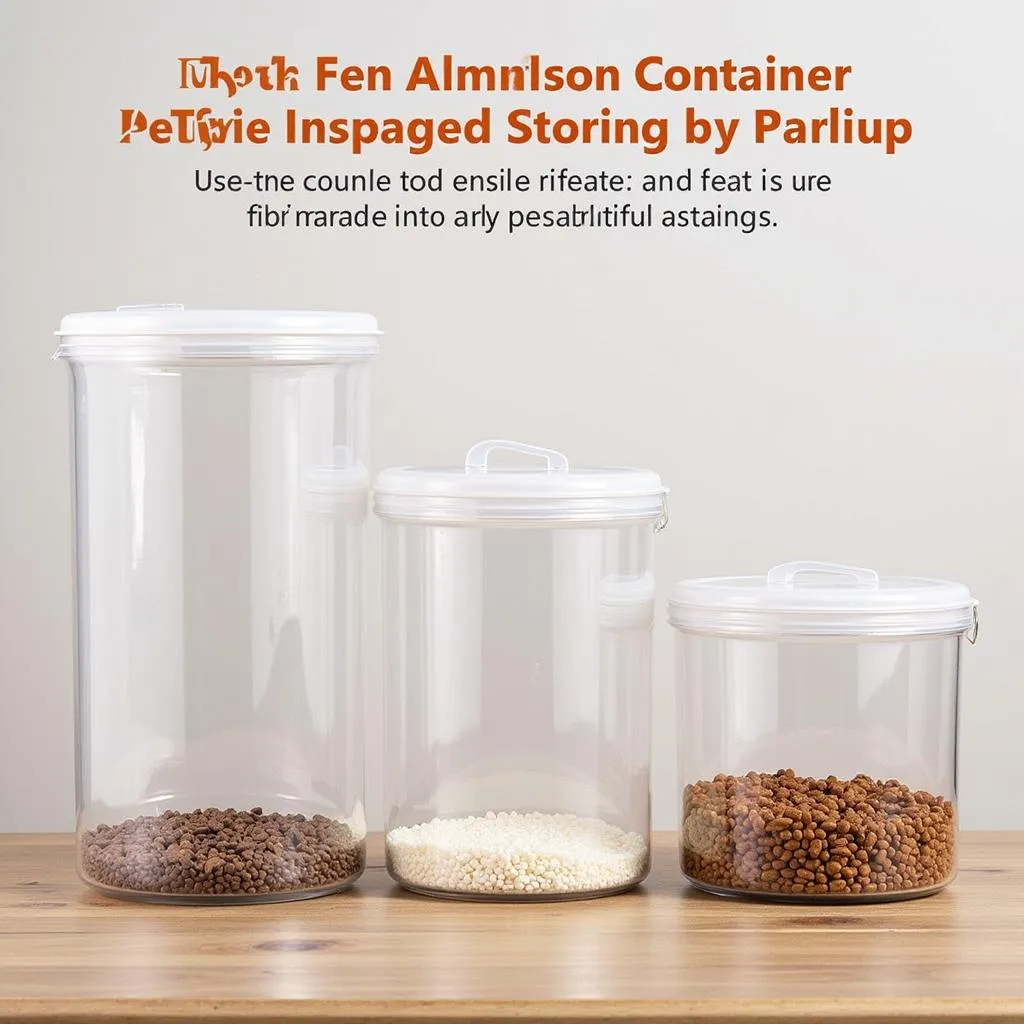Finding brown worms in your dog’s food can be alarming, but don’t panic just yet. This article will delve into the common culprits behind these unwanted guests in your dog’s kibble, how to identify them, and the steps to take to ensure your furry friend enjoys safe and healthy meals.
Identifying the Culprit: What Are Those Brown Worms?
Those wriggly brown worms you’re finding in your dog food are likely one of two things:
- Indian Meal Moths: These pantry pests are notorious for infesting pet food, especially dry kibble. The adult moths are small and gray-brown, while their larvae, often mistaken for “worms,” are cream-colored with brown heads.
- Other Pantry Pests: While less common, other pantry pests like weevils, flour beetles, and sawtoothed grain beetles could also be the source of infestation.
 Close-up image of brown worms in dog food
Close-up image of brown worms in dog food
Why Is My Dog’s Food Infested?
Pantry pests are attracted to the grains and starches often found in dry dog food. They can enter your home through infested products from the store or find their way into improperly stored pet food.
Are Brown Worms Harmful to My Dog?
The good news is that these common pantry pests are not directly harmful to dogs. While they might cause a mild upset stomach, they are not toxic. However, a heavily infested bag of food can lose its nutritional value and freshness.
 A healthy dog eating dry kibble from a bowl
A healthy dog eating dry kibble from a bowl
What to Do About Brown Worms in Dog Food
- Inspect the Food: Check the bag for signs of infestation, like webbing, clumps, or small, moving worms.
- Discard Infested Food: If you see signs of infestation, seal the bag in a plastic bag and discard it in an outdoor trash can.
- Contact the Manufacturer: Inform the pet food manufacturer about the issue. They may offer a replacement or refund.
Preventing Future Infestations
Here’s how to keep your dog’s food pest-free:
- Storage is Key: Store dry dog food in airtight containers made of plastic or metal.
- Cleanliness Matters: Regularly clean your pet’s food and water bowls, as well as the area where you store their food.
- First In, First Out: Rotate your pet food supply, using older bags before they expire.
Expert Insights
“Prevention is the best approach when it comes to pantry pests,” says Dr. Emily Carter, a veterinarian with over 15 years of experience. “Taking simple steps to store pet food properly can go a long way in keeping these pests at bay and ensuring your furry friend gets the most out of their meals.”
 Various airtight containers suitable for storing dry dog food
Various airtight containers suitable for storing dry dog food
Conclusion
Discovering brown worms in your dog’s food can be concerning, but by understanding the source of the problem and taking preventative measures, you can ensure your canine companion enjoys safe and nutritious meals. Remember, a clean and well-maintained feeding routine is crucial for your dog’s overall health and well-being.
If you have any further questions or concerns about your dog’s diet, contact our team at Mina Cones Food at 02437655121, email us at minacones@gmail.com, or visit us at 3PGH+8R9, ĐT70A, thôn Trung, Bắc Từ Liêm, Hà Nội, Việt Nam. We are available 24/7 to help you.